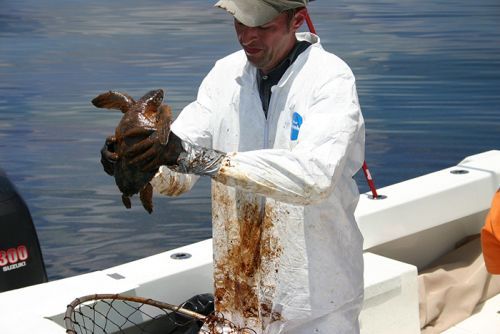Oil Spill Response and Assessment Guidelines for Sea Turtles
During an oil spill, important decisions need to be made fast, so it's critical that experts are equipped with the tools they need to consider all types of marine resources. This is especially important when it comes to protected species like sea turtles.
To best prepare oil spill experts for spills in which sea turtles could be impacted, NOAA has released Guidelines for Oil Spill Response and Natural Resource Damage Assessment: Sea Turtles (NOAA Technical Memorandum NMFS-OPR-61).
The document contains invaluable resources on a wide range of topics, including sea turtle vulnerability at various life stages, conceptual models for injury assessment, and field and lab data collection protocols.
Top sea turtle and oil spill experts came together to develop these guidelines, which provide an in-depth review of considerations for response and natural resource damage assessment (NRDA) for sea turtles and incorporates knowledge gained from previous oil spills, especially the 2010 Deepwater Horizon (Macondo 252) spill within the northern Gulf of Mexico. Included in the guidelines are essential tools and information pertinent to sea turtles found within U.S. waters to aid preparations for future oil spills, promote an effective spill response, and facilitate damage assessment.
 An official website of the United States government.
An official website of the United States government. 
